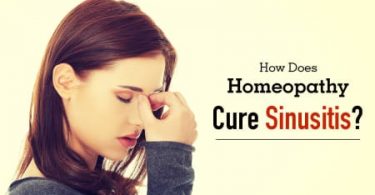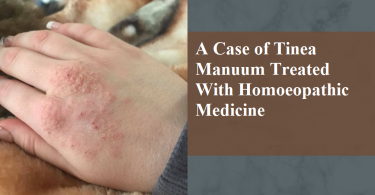
Abstract
Mania is a psychological condition that causes a person to very intense moods , hyperactivity and delusions. Mania ( or manic episodes) is common symptom of bipolar disorder. In Kent Repertory the rubric mania is given in the Mind chapter. Other mania rubrics such as Dipsomania, Kleptomania , Monomania etc given in different chapters of Kent Repertory. “Repertory of the Homoeopathic materia Medica” is written by Dr. J T Kent . This is one of the most popular Repertory based on the philosophy of general to particular. The first edition of Kent Repertory is published in the year of 1897. The purpose of this study is the learning and understanding of mania and different types of mania rubrics in Kent Repertory with their remedies.
Key words: Mania , Kent Repertory, Dipsomania, Kleptomania, Monomania, Nymphomania, Photomania, mania -a-potu.
Introduction
Mania or manic phase is period of 1 week or more in which a person experience a change in normal behaviour that drastically affects their functioning. Mania is different from hypomania because hypomania does not cause a major deficit in social or occupational functioning and it is a period of at least 4 days rather than 1 week.
The defining characteristics of mania are increased talkativeness , rapid speech, decreased the need for sleep , racing thoughts, distractibility increase in goal – directed activity , and psychomotor agitation. Some other hallmarks of mania are an elevated or expansive mood, mood lability , impulsivity, irritability and grandiosity.
Mania must be distinguished from heightened energy and altered functioning that arises from substance use , medical conditions or other causes. Mania is a ‘ natural’ state which is the characteristic of bipolar 1 disorder.
Etiology
The etiology of mania and more generally bipolar 1 disorder, is not known . There is strong evidence that the cause is combination of genetic, psychological and social factors. There have been multiple studies involving families which show a definite genetic component. This is also extensive anecdotal evidence that stressful life events and other psychosocial factors contribute to the onset and frequency of manic phases.
Epidemiology
Mania is the diagnostic criteria for bipolar 1 disorder, so the epidemiology of bipolar 1 disorder also tells us about the prevalence of mania.
The lifetime prevalence of bipolar disorder is about 4 per cent. Men and women are equally likely to be affected . However women are much more likely to experience many mood episodes in a given year( rapid cycling) . The median age of onset of bipolar disorder is around age 25. Men typically have an earlier age of onset than women.
Pathophysiology
The pathophysiology of mania and bipolar disorder is general, has been shown in some studies to involve specific brain regions, however, the exact mechanisms involved are still unknown.
In functional studies as well as structural studies, bipolar disorder patients have shown alternations in the amygdala, hippocampus, basal ganglia, prefrontal cortex and the anterior cingulate. The amygdala is hyperactive in patients with BD , and the hippocampus and prefrontal cortex are hypoactive . This increased activity in the amygdala along with decreased activity in cortical regions may be the reason why the executive function is impaired in mania while the emotions are heightened and unrestrained.
Management
In general a manic patient should be treated with medication. Lastly psychoeducation and psychotherapy are powerful long term tools for patients with bipolar disorder as well as for their families or care givers.
Differential diagnosis
There are numerous differential diagnosis in the assessment of patients who present with symptoms like mania.
- Caffeine or other stimulant intoxication, especially cocaine , amphetamine and nicotine.
- Hallucinogens and excessive steroid and human growth hormone.
- Schizophrenia, severe anxiety, severe obsessive-compulsive disorder, major depressive disorder.
- Histrionic and borderline personality, mood libility , anger dysregulation , inappropriate and outlandish dress, bizarre behaviour.
- Physiologic conditions: Hyperthyroidism, hypertensive urgency, hypercorticotisolemia, hyperaldosteronism, masses or tumors in brain , major neurocognitive disorders, acromegaly and delirium.
Homoeopathic treatment
Homoeopathy has many remedies which have symptoms of mania . These remedies acts well on mind of the persons . Kent given many remedies under the rubric mania .
Chapter : Mind
Rubric : Mania ( see Delirium, Insanity, Rage etc) : Absin, acon , aeth, ail , alum, anac, ant-c, apis, arn, arg-m, Ars, arum-t, aur, bar-c, bar-m, Bell , brom, bufo, cact, calad, calc, camph, cann-I, canth, chel, chin, chin-s , chlol, cic, cimic, coca, cocc, coff, colch, con, crot-c , crot-h, cupr, cycl, dig, glon, hell,hep, Hyos, ign, indg, iod, Kali-br, Kali-chl, Kali-I, kali-p, lach, led, Lyc, manc, Merc, merc-c, nat-m, nux-m, Nux-v , oena, op, ox-ac, phos, plb, psor, puls, raph, rhod, sabad, sec, sep, Stram, sulph, tarent, tereb, Verat, verat-v, zinc.
held , wants to be: Ars
mental exertion , after: Lach
menses, before: Sep
paroxysmal: Tarent
periodical : Arg-n, nat-s, tarent.
suppressed eruptions, after: zinc
menses : Puls
Different ‘mania’ rubrics in Kent Repertory .
Kent mentioned the following types of mania in his Repertory of Homoeopathic Materia Medica.
Dipsomania
Dipsomania ( Binge drinking ) is an uncontrollable craving for alcohol, where the client has the habit of periodic , compulsive bouts of alcohol intake.
Dipsomania is crisis lasting from one day to two weeks and consisted of a rapid and huge ingestion of alcohol with loss of all other interests . More common in males .
Homoeopathic treatment :
Kent Repertory : Mind : Dipsomania : Ars, bufo, calc, caust, con, hep, lach, mag-c, merc, nux-v, op, petr, pulse, staph, sulph.
drinking on the sly: sulph
menses , before: selen .
Kleptomania
Kleptomania, a disabling impulsive control disorder is characterized by the repetitive and uncomfortable theft of items that are of little use to the affected person.
Kleptomania generally has its onset in late adolescence or early adulthood and appears to be more common among women. Kleptomania is a disabling disorder that results in intense shame , as well as legal , social , family and occupational problems.
Homoeopathic treatment:
Kent Repertory : Mind : Kleptomania : Absin, ars, art-v, bry, caust, cur, kali-c, lyc, nux-v, puls, sep, staph, stram, sulph, tarent.
steals dainties: Mag-m, nat-c.
steals money: Calc.
Mania-a-potu
Insanity arising from the use of spirituous liquors.
Homoeopathic treatment:
Kent Repertory : Mind : mania-a-potu: Acon, Agar, ant-c, arn, Ars, bell, bism, calc, calc-s, cann-I, carb-v, chin, chlol, cimic, coff, crot-h, dig, ferr-p, gels, grat, hell, Hyos, ign, kali-br, kali-p, Lach, led, lyc, merc, nat-c, Nat-m, Nux-v, oena, Op, phos, puls, ran-b, rhod, rhus-t, ruta, selen, sep, sil, spig, Stram, stry, sulph, sul-ac, Verat, zinc.
Monomania
A condition in which someone is extremely interested in one thing , in a way that is not normal.
Homoeopathic treatment:
Kent Repertory : mind : Monomania : Acon, anan, carb-v, camph, hell, ign, nux-m, puls, sil, stram, sulph, thuj.
to appear in a public place in a grotesque manner : Anan.
Nymphomania
Nymphomania can be defined in terms of three distinct elements: marked increase in sexual drive, extremely frequent partner sexual behaviour, promiscuity in females. The essence of the problem, however is the disruptive increase in desire , causes often involve one or more of the following: acting out , atypical psychoses , alcohol and / or drug abuse , temporal lobe disorders, involvement with an inappropriate partner , response to another sexual dysfunction. Many of these women are unable to derive emotional satisfaction from sex.
Homoeopathic treatment:
Kent Repertory: Mind : Nymphomania: Ambr, agar, ant-c, apis, bar-m, bell, calad, calc, calc-p, camph, cann-I, cann-s, canth, carb-v, cedr, chin, coff, dig, dulc, fl-ac, graph, Graph, Hyos, Kali-br, Lach, lil-t, lyc, merc, mosch, murx,nat-c, Nat-m, nux-v, op, orig, phos, plat, plb, puls, raph, rob, sabad, Sabin, sil, staph, Sabin, sil, staph, stram, sulph, tarent, Verat , zinc.
Menses , before: calc-p, phos, stram, Verat, ; during: Hyos, Kali-br, plat, sec, Verat .
Metrorrhagia, during: Mosch, murx, plat, sec.
Pregnancy, during: Zinc.
Puerperal: Chin, Kali-br, plat, Verat.
Photomania
A psychotic desire for light.
Homoeopathic treatment :
Kent Repertory: Eye: Photomania : Acon, am-m, Bell, calc, Gels, lac-c, ruta , Stram, valer.
Delirium, with: Calc.
Prognosis of mania
The prognosis of manic patients is favourable, granted they are adherent to medications and therapy . Some factors associated with a poorer outcome are a history of abuse , psychosis, low socioeconomic status , comorbid illness or a young age of the first onset.
Conclusion
Mental health is most important and it is also most neglected compared to Physical health. Mania is one of the most common mental disease, it is a state of abnormally elevated energy level. In mania case taking is most important. A well taken case is half cured so one needs to take case properly for identifying causative factor . Then one should convert symptoms and observation into appropriate rubrics with the help of suitable repertory for selection of simillimum . Kent Repertory is one among them it is most suitable to mental diseases. Kent Repertory has the direct rubric mania in mind chapter and also it has many different types of mania which helps to selection of right remedy. Along with medication physician needs to give Psychotherapy and Psychoeducation to mania patients for better outcome.
Reference
- Kent .J.T. Repertory of the homoeopathic materia medica. Enriched Indian edition.B.Jain publishers (p)Ltd. New Delhi.2015.36-261.
- Dr. Tiwari Shashikanth. Essentials of repertorization. Fifth edition. B. Jain publishers(P)Ltd. New Delhi. 2016.260.
- Grant Jon E, Odlaug Brian L. Kleptomania: clinical characteristics and treatment. Brazilian journal of psychiatry. 2018 may. [ http://www.scielo.br/scielo.php?script=sci_arttext&pid=S1516-44462008000500003&lng=en&nrm=iso&tlng=en] [ cited on 21/12/2020]
- Levine Stephen B. A modern perspective on Nymphomania. Journal of sex & marital therapy. 2008 Jan. 316-324. [ https://www.tandfonline.com/doi/abs/10.1080/00926238208405437 ] [ cited on 22/12/2020]
- Begum R Nuziba. Dipsomania. Asian journal of nursing education and research.2011. [ https://ajner.com/HTMLPaper.aspx?Journal=Asian%20Journal%20of%20Nursing%20Education%20and%20Research;PID=2011-1-3-11 ] [ cited on 24/12/2020]
- MW Dailey, A Saadabadi . Mania. Statpearls publishing LLC . 2020 Nov. [ https://www.ncbi.nlm.nih.gov/books/NBK493168/#_NBK493168_pubdet_ ]. [ cited on 24/12/2020]
- Bouvier John. A law dictionary , adapted to the constitution and laws of the United States. 1856. Retrieved December 30, 2020 from [ https://legal-dictionary.thefreedictionary.com/Mania+a+potu ]
By
Dr. Ningappa Otti
MD part 2 ( 2018-19 batch)
Department of Repertory
Government Homoeopathic Medical College and Hospital , Bengaluru – 560079.
Phone: 7259268860
Email: [email protected]




